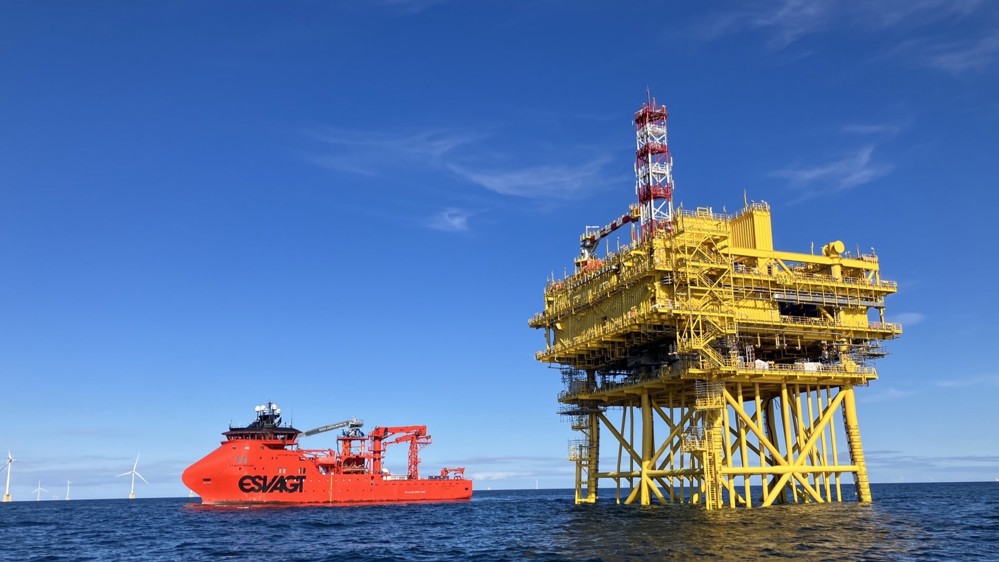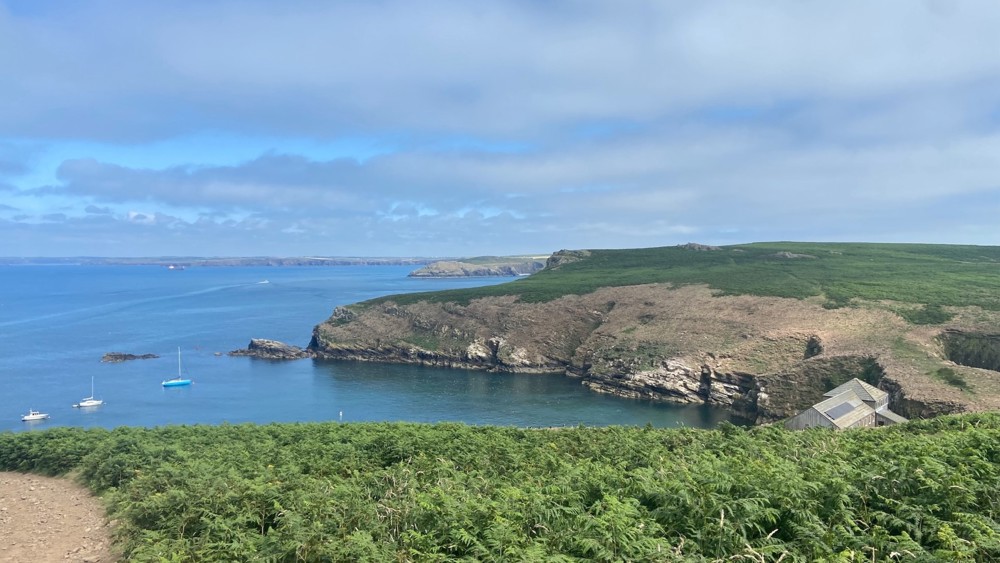Kat Route-Stephens, Head of Environment and Consents (co-lead)
18/07/2025 | Planning



Do we actually need more legislation around offshore wind compensation?
18 July 2025
The short answer is yes, we do. We are in a biodiversity and climate crisis and the current approach to delivering environmental compensation is neither good for nature nor offshore wind. We therefore very much welcome plans by the Department for Environment, Food and Rural Affairs (Defra) to consult on environmental compensation reform under the Energy Act 2023.
For the longer answer, we need to understand the context of how this has come about and why it is an important issue for offshore wind.
What is the current state of play?
The UK is home to globally significant seabird populations, including 70% of northern gannets and 96% of Manx shearwaters. But seabird numbers in the UK have declined in recent decades. The latest data from the long running Seabird Monitoring Programme (1986-2023) highlighted that many species have seen sharp declines, with ten species, including kittiwakes and puffins, now on the UK’s Red List of Birds of Conservation Concern, indicating they face serious threats.

Kittiwake numbers, for example, have dramatically fallen as stocks of their primary food source, sandeels, have declined due to climate change and overfishing. Activities at sea, including oil and gas infrastructure, offshore wind and fishing can also pose a physical risk of harm or disturbance. Diseases like bird flu have hit some colonies hard, and invasive predators like rats can devastate nesting sites. Finally, a lack of Government resources to effectively manage and monitor protected sites has also contributed.
Across the UK we have a series of designated areas called the National Site Network, that give special protection to different habitats and species, including seabirds. Much of the legislation that underpins this is enshrined into UK law as the Habitats Regulations via two key European Union Directives – the Habitats and the Birds Directives.
Under the Habitats Regulations and Marine and Coastal Access Act 2009, any project which may impact a designated site must undertake a Habitats Regulations Assessment (HRA) and/or a Marine Conservation Zone Assessment. These are staged processes:
- Screening test of likely significance – is there a reasonable chance that there will be a significant impact on a designated site feature? If yes, move to 2. If no, assessment complete.
- Appropriate Assessment – is the predicted impact significant enough, after mitigation, to be likely to damage the integrity (coherence) of the national sites network? If no, assessment complete and mitigation implemented. If yes, move to 3.
- Derogation tests – if the three tests below are met, the project can go ahead:
- No alternative solutions – can the aims of the project be achieved in a way that is less damaging or avoid damage to the site.
- The project needs to be carried out for imperative reasons of overriding public interest (IROPI).
- The necessary compensatory measures can be secured.
Since the Hornsea Three decision in 2020, nearly every single offshore wind farm has required a derogation in order for consent to be given. The challenge is agreeing with regulators, Statutory Nature Conservation Bodies (SNCBs) and stakeholders the level of compensation needed to offset any residual significant impacts after they have avoided and mitigated as far as reasonably possible. For example, if your project is predicted to kill five birds per year over the course of the 35+ years it’s in construction and service, you need to “replace” those birds with some additional contingency through an agreed ratio.
What are the challenges with this?
The offshore wind sector is set to expand substantially to meet the Government’s targets for Clean Power by 2030 and to achieve net zero, which will increase cumulative pressures and mean much more compensation has to be secured. So there is a need for industry-scale consideration of how future-proofed compensation will be delivered. This includes work by Defra and Scottish Government under the Energy Act 2023.

Seabirds (mostly kittiwakes and guillemots) and seafloor habitats (sandbanks and reefs) are the most common ‘protected features’ triggering the need for compensation from the impacts of offshore wind. The current inflexible approach to compensation measures and the thresholds at which the need is triggered are causing significant challenges across the offshore wind sector. Many of the issues arise from the rigid application of the precautionary principle by regulators and SNCBs, meaning each level of an impact assessment is overly cautious, resulting in inflated predicted impacts and unrealistic compensation requirements.
An excellent explanation of this is given in Dr Mark Trinder's evidence at a recent Dogger Bank South windfarm DCO hearing (41:00 to 49:00) and summarised in a recent Nutcracker blog by legal Partner and Head of Planning, Catherine Howard, of Herbert Smith Freehills Kramer.
Finding ecologically meaningful compensation at scale for these features, that provides an identical number of a specific species or m2 of seafloor, (sometimes termed ‘like-for-like’) is extremely difficult and often not within a developer’s gift to deliver.
As an example, compensation was triggered for very small impacts from the three Norfolk Zone projects, which boast a combined capacity of 4.2GW and will power around 4 million homes once operational. These projects were blocked from construction for two years as they were unable to ‘adequately compensate’ for placing rock on 0.005% of a protected seafloor site. The same issue is preventing some operational wind farms from securing licences for repairs today.
Thankfully, the Government has taken decisive action to address this with a commitment to designate new Marine Protected Areas delivered through a Marine Recovery Fund which we believe will help unlock at least 10.5 GW of offshore wind projects.

Challenges can also arise due to a concept called ‘additionality’ where proposed compensation measures must be above and beyond existing policy requirements and normal site management, even if there are no reasonably foreseeable plans or resources available to implement these. A good example of this centres around fisheries management measures, such as sandeel fisheries closures, which could increase prey availability, boosting seabird populations. However, given policy drivers to reduce the ecological impact of fishing, this measure isn’t available as compensation for offshore wind despite such a win-win scenario.
Even if a project is awarded consent, compensation can still pose a programme and investment risk as many measures need to be up and running well in advance of impacts occurring, often years ahead of time. The Development Consent Order condition for Hornsea Three originally stated that its kittiwake compensation, which encompassed four artificial nesting structures at two locations on the East coast of England, needed to be in place 4 years before electricity could be generated.
Legal work commissioned through the Offshore Wind Industry Council (OWIC) found that many of these compensation challenges were not down to the Habitats Regulations themselves, but a build-up of practice and rigid interpretation over time. OWIC’s findings suggested that, for habitats compensation, a broader range of compensation measures could already be adopted under current legislation and updated guidance. For seabird compensation, minor legislative changes may be needed.
What do we hope to see in the upcoming consultation?
Whilst there have been a few attempts to address these issues, including Defra guidance consultations in 2021 and 2024, we understand this latest iteration will have the required legislative backing to bring the changes forward through the Energy Act 2023.
At a minimum, we need this consultation and the subsequent legislation, policies and guidance to:
- Enable a broader suite of compensation measures.
- Avoid very small impacts from trigging compensation.
- Apply a pragmatic approach to assessment precaution and compensation ratios.
- Resolve compensation additionality challenges.
- Allow flexibility between construction schedules and compensation timings.
We believe the Energy Act 2023 presents a real opportunity to fix many of the compensation issues facing the offshore wind sector, regulators and stakeholders alike. By providing clear guidance, with strong legislative backing, it can set out the expectations and options as well as define a route forward to deploying these projects that are vital to move us towards clean power.
Enabling a wider range of compensation measures, which would be ecosystem-based and aimed at restoring the environment and reducing pressures, will have profound positive impacts for our precious wildlife across the UK. A healthy marine environment and resilient seabird populations are good for offshore wind. Together they enable us to confidently move to a renewable energy-based system in a sustainable way, addressing the climate crisis while ensuring that marine ecosystems are protected and supported in the most effective manner for future generations.
In conclusion
Whilst we do need changes to legislation, it's important to stress that these are not to fundamentally change how the habitats regime works. Small changes which support appropriate compensation options for marine species and habitats are what we hope to see.
OWIC’s Environment and Consents workstream along with the multi-stakeholder Pathways to Growth Coordination Group, is progressing work across seven prioritised focus areas, many of which related to the challenges highlighted here around processes and Habitats Regulations. OWIC’s Strategic Compensation Studies (SCS) project, funded by the Offshore Wind Evidence and Change programme and OWIC developers, aims to build stakeholder confidence in strategic compensation measures by conducting practical trials, addressing data and evidence gaps, and supporting timely project consent and delivery.
The project also seeks to expand Defra’s Library of Strategic Compensation Measures and support the Marine Recovery Fund, as well as accelerating offshore wind deployment in UK waters, maintaining ecological cohesion, and promoting broader marine recovery. The project will produce a toolbox of resources and full details can be found on the OWIC website.
RenewableUK will be drafting a response to the Defra environmental compensation reform consultation and seeking member input once launched.



